Armenia Flag Meaning
Three horizontal stripes of red, blue, and orange (apricot), representing the blood shed for independence, the Armenian sky and hope for peace, and the fertile land and hardworking nature of the Armenian people, based on the flag of the First Republic of Armenia (1918-1920).
- Continent
- Asia
- Adopted
- 1991
- Ratio
- 1:2
- Colors
- red, blue, orange
- Designer
- Unknown
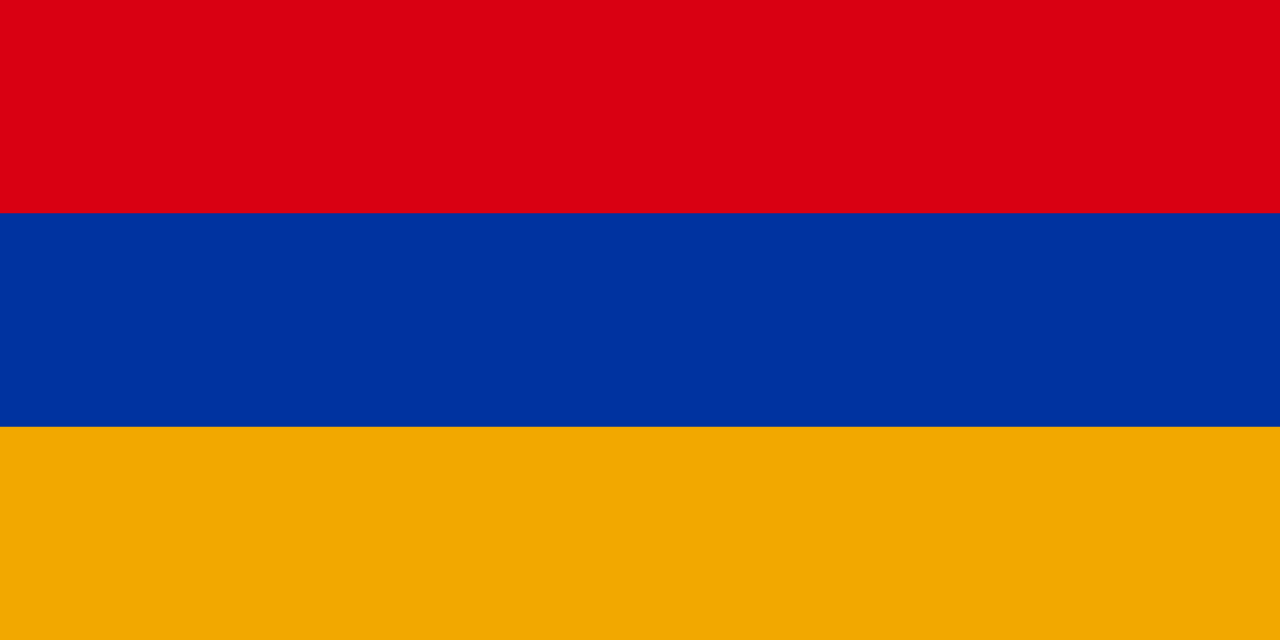
Symbolism
Red Stripe: Represents the blood shed by Armenians throughout their long struggle for survival and independence, particularly during the Armenian Genocide of 1915 and countless battles to defend their homeland and Christian faith.
Blue Stripe: Represents the clear sky above Armenia and the hope for peace and prosperity, symbolizing the Armenian people's enduring optimism despite centuries of persecution and their aspirations for a peaceful future.
Orange/Apricot Stripe: Represents the fertile Armenian soil and the industrious nature of the Armenian people, as well as their connection to the apricot fruit that is believed to have originated in Armenia and symbolizes the nation's agricultural heritage.
Historical Continuity: The flag design connects modern Armenia to the brief First Republic of Armenia (1918-1920), representing the continuity of Armenian national identity despite Soviet rule and diaspora displacement.
History
- 9th-6th Century BC: The Kingdom of Urartu flourished in the Armenian Highlands, establishing the foundation of Armenian civilization and creating advanced metallurgy, architecture, and irrigation systems that influenced later Armenian culture.
- 301 AD: Armenia became the first nation to officially adopt Christianity as its state religion under King Tiridates III, establishing a Christian identity that would define Armenian culture for nearly 1,700 years.
- 405 AD: Saint Mesrop Mashtots created the Armenian alphabet, preserving the Armenian language and enabling the development of a rich literary tradition that helped maintain Armenian identity through centuries of foreign rule.
- 11th-14th Century: The Armenian Kingdom of Cilicia thrived on the Mediterranean coast, serving as a bridge between East and West during the Crusades while mainland Armenia faced Seljuk and Mongol invasions.
- 1514-1828: Armenia was divided between the Ottoman and Persian empires, with most Armenians living under Ottoman rule where they formed a prosperous merchant class despite facing periodic persecution and discriminatory policies.
- 1828-1915: Russian rule over Eastern Armenia brought relative stability and cultural renaissance, while Western Armenia remained under Ottoman control where tensions between Armenians and the government gradually increased.
- April 24, 1915: The Armenian Genocide began with the arrest of Armenian intellectuals in Constantinople, leading to the systematic extermination of 1.5 million Armenians by the Ottoman Empire during World War I.
- May 28, 1918: The First Republic of Armenia was established following the Russian Revolution, adopting the current flag design and creating the first independent Armenian state in over 500 years.
- November 29, 1920: Soviet forces occupied Armenia, ending the brief independence and incorporating the country into the Soviet Union as the Armenian Soviet Socialist Republic.
- 1988: The Nagorno-Karabakh conflict began as ethnic Armenians in Azerbaijan sought reunification with Armenia, leading to war and creating a frozen conflict that continues to shape regional politics.
- September 21, 1991: Armenia declared independence from the Soviet Union, readopting the 1918 flag and beginning the transition to democracy and market economy under President Levon Ter-Petrosyan.
- 2018: The Velvet Revolution led by Nikol Pashinyan brought democratic reforms and anti-corruption efforts, ending decades of authoritarian rule and raising hopes for genuine democratic transformation.
- 2020: The Second Nagorno-Karabakh War resulted in Armenian defeat and significant territorial losses to Azerbaijan, creating a national trauma and leading to political instability and protests.
Trivia
- Armenia is often called the 'first Christian nation' as it was the first country to officially adopt Christianity as its state religion in 301 AD, three centuries before the Roman Empire.
- The flag represents a landlocked country in the Caucasus Mountains that has no diplomatic relations with two of its four neighbors (Turkey and Azerbaijan) due to historical and ongoing conflicts.
- Mount Ararat, depicted on Armenia's coat of arms, is actually located in Turkey but remains a powerful symbol of Armenian identity and the biblical landing place of Noah's Ark.
- The Armenian diaspora is larger than Armenia's population, with about 7-10 million Armenians living worldwide compared to 3 million in Armenia, creating a global Armenian network.
- Armenian is an independent branch of the Indo-European language family with its own unique alphabet of 39 letters created by Saint Mesrop Mashtots in 405 AD.
- The flag flies over a country that gave the world the apricot, which is believed to have originated in Armenia and remains an important cultural symbol and agricultural product.
- Armenia is home to some of the world's oldest wine-making traditions, with archaeological evidence of wine production dating back 6,100 years in the Areni cave.
- The country has one of the world's highest rates of chess grandmasters per capita, with chess being mandatory in schools and considered a national sport alongside football.
- Traditional Armenian architecture includes distinctive stone churches with conical domes, with many medieval monasteries like Geghard and Haghpat being UNESCO World Heritage sites.
- The flag represents a country where the Armenian Apostolic Church plays a central role in national identity, with about 95% of the population belonging to this ancient Christian denomination.
- Armenia has a rich tradition of carpet weaving, with Armenian carpets being prized for their intricate designs and high quality, often featuring unique regional patterns and symbols.
- The country is known for its hospitality traditions, where guests are treated with extraordinary respect and generosity, often being offered the best food and accommodations available.
- Armenian cuisine features dishes like dolma, khorovats (barbecue), and lavash bread, with lavash being recognized by UNESCO as an Intangible Cultural Heritage of Humanity.
- The flag represents a country that has produced notable figures including composer Aram Khachaturian, chess champion Garry Kasparov, and numerous successful entrepreneurs and artists in the diaspora.
- Despite its small size and difficult geography, Armenia has maintained a distinct cultural identity for over 2,500 years, surviving conquests, genocides, and attempts at assimilation.
Related Countries
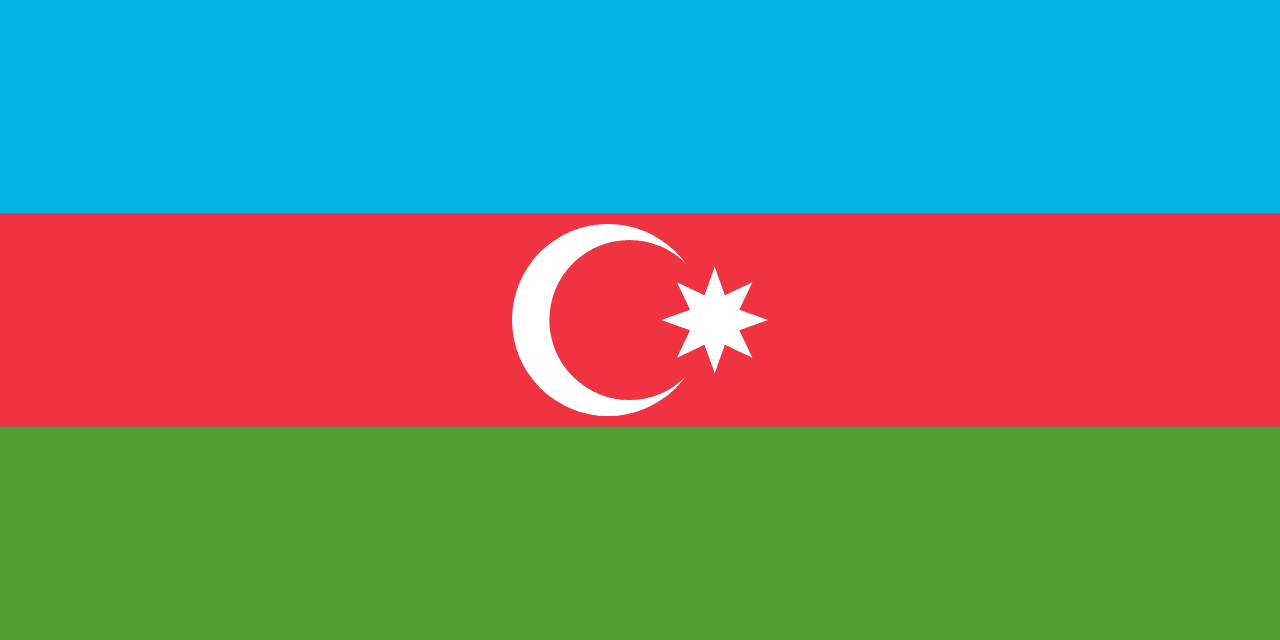
Azerbaijan
Asia
Three horizontal stripes of blue, red, and green with a white crescent and eight-pointed star in the center, representing Turkic heritage, modernity and progress, Islamic tradition, and the eight branches of the Turkic peoples, designed during the brief independence period of 1918-1920.
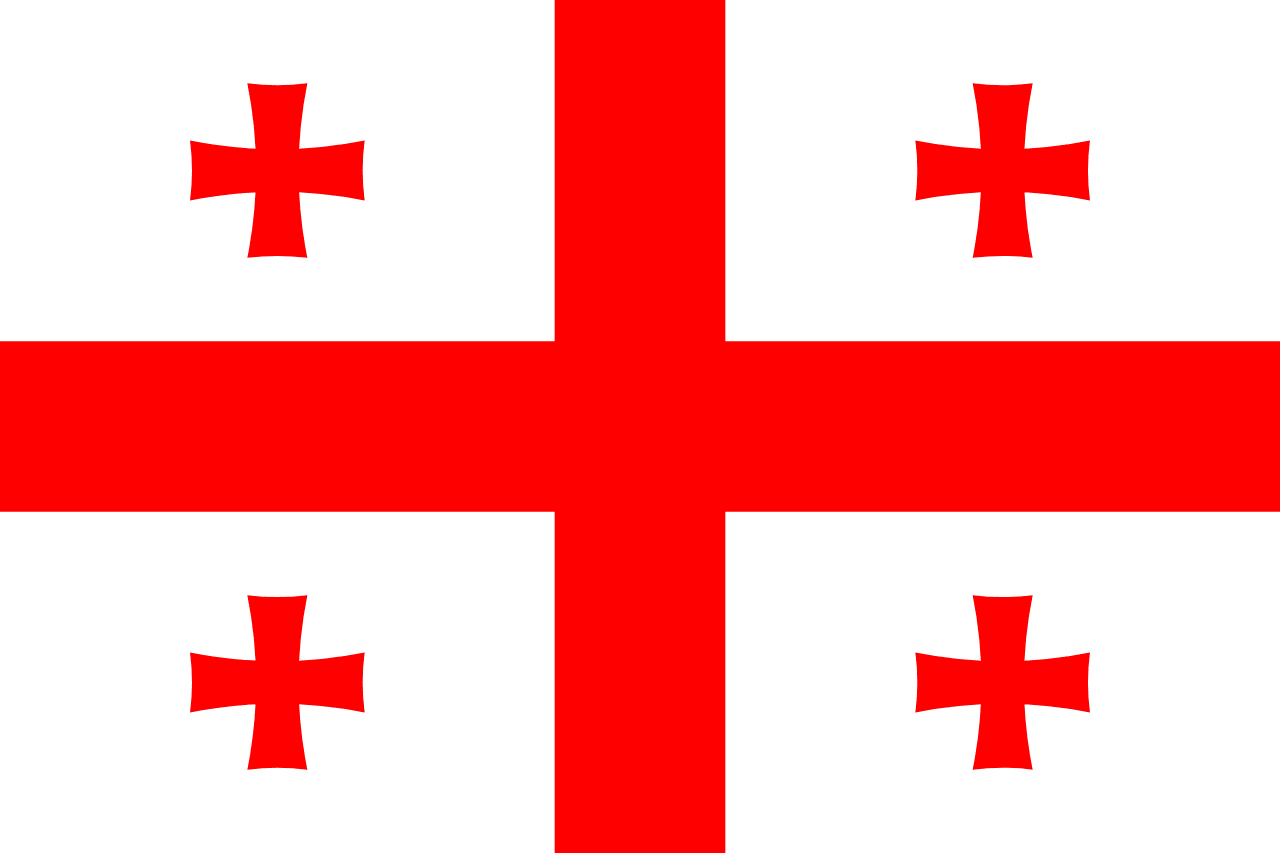
Georgia
Asia
A white field with a large red Saint George's cross extending to the edges and four smaller red Bolnisi crosses in each quadrant, representing Georgia's ancient Christian heritage and the five wounds of Christ.

Iraq
Asia
Three horizontal stripes of red, white, and black (Pan-Arab colors) with 'Allahu Akbar' (God is Greatest) written in green Arabic Kufic script across the white stripe, representing Arab unity, Islamic faith, and Iraqi sovereignty.
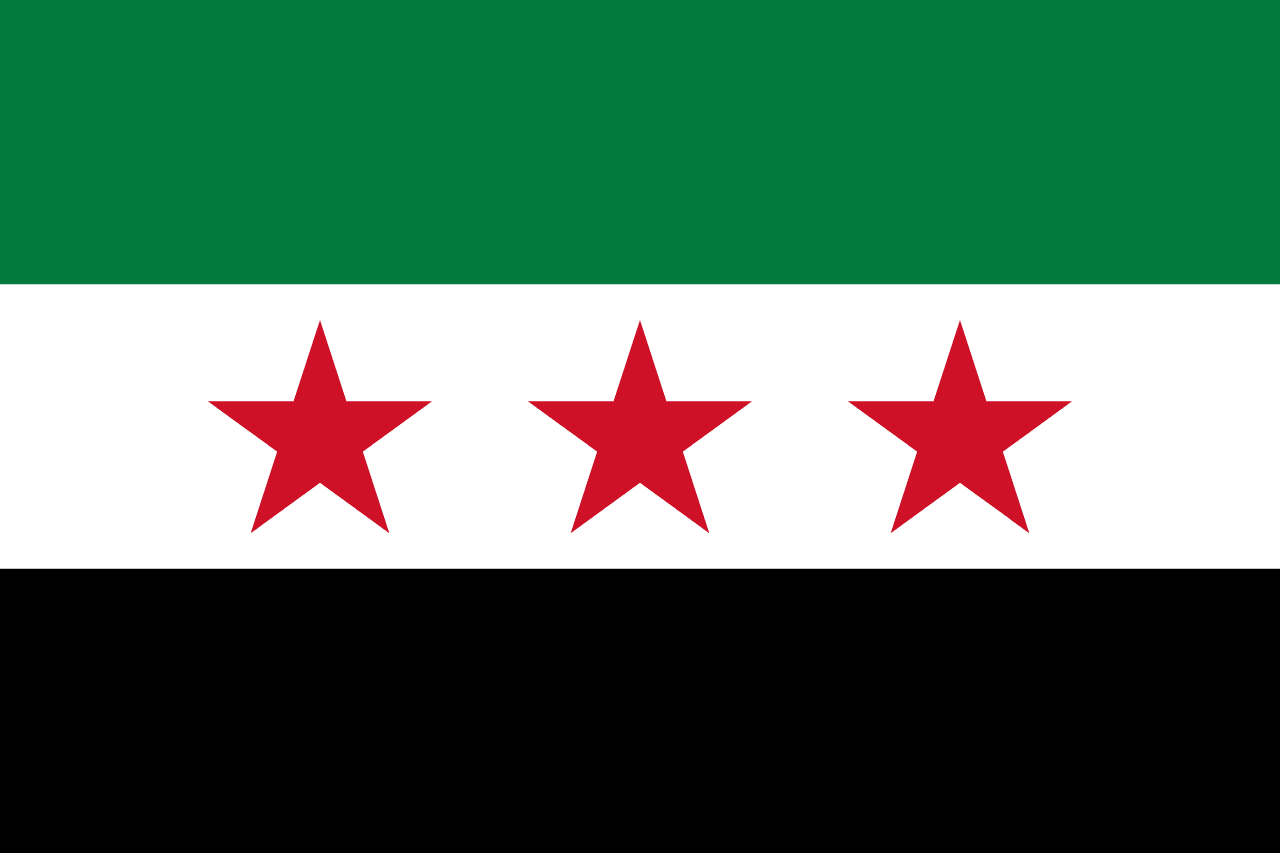
Syria
Asia
Three horizontal stripes of red, white, and black with two green five-pointed stars on the white stripe, representing the Pan-Arab colors of liberation struggles, the Hashemite flag heritage, and the Ba'ath Party's Arab socialist ideology that has governed Syria since 1963.

Turkey
Asia
The flag of Turkey is bold and simple in design with a red field with a white crescent moon and five-pointed star slightly off-center toward the hoist. This represents the blood of martyrs who died for the country, Islam, and the guidance of the state, with symbols that have ancient origins in Turkic and Ottoman traditions.
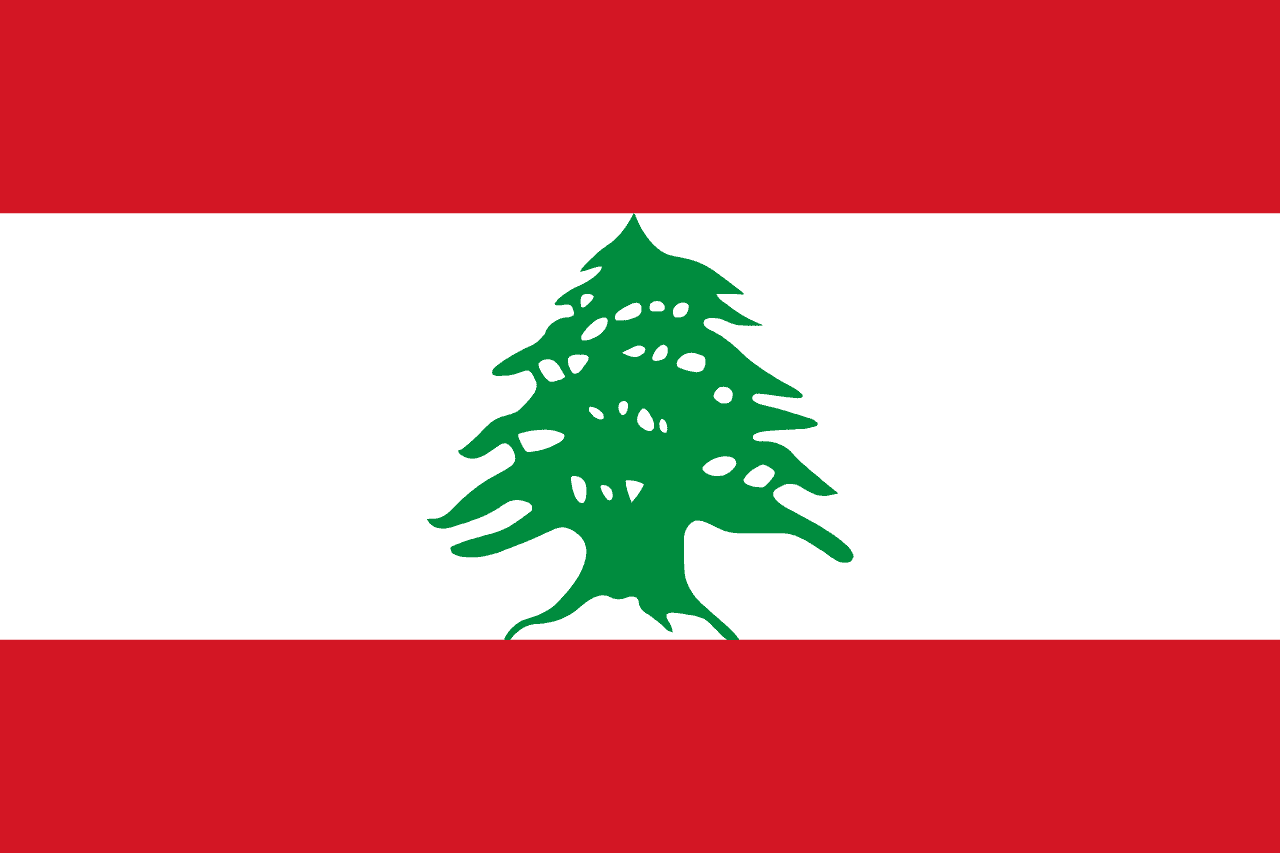
Lebanon
Asia
Two horizontal red stripes separated by a white stripe twice their width, with a green cedar tree centered on the white stripe, representing the strength, purity, and eternal heritage of the 'Land of the Cedars.'